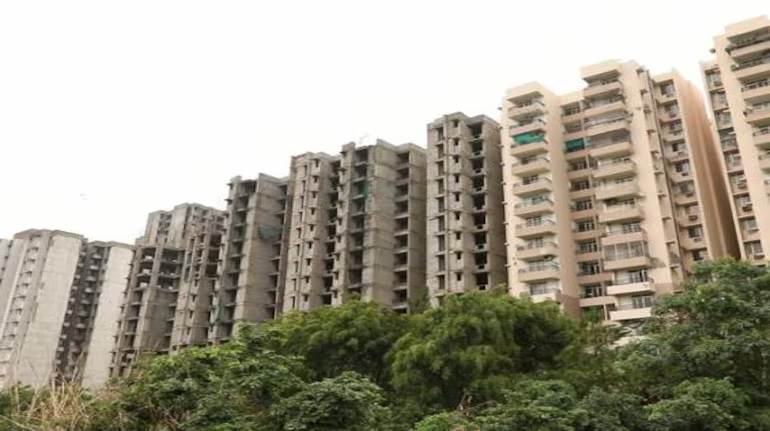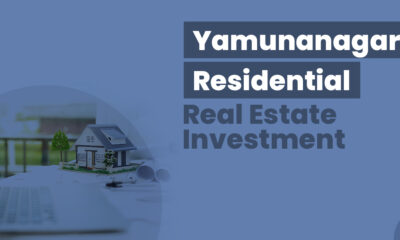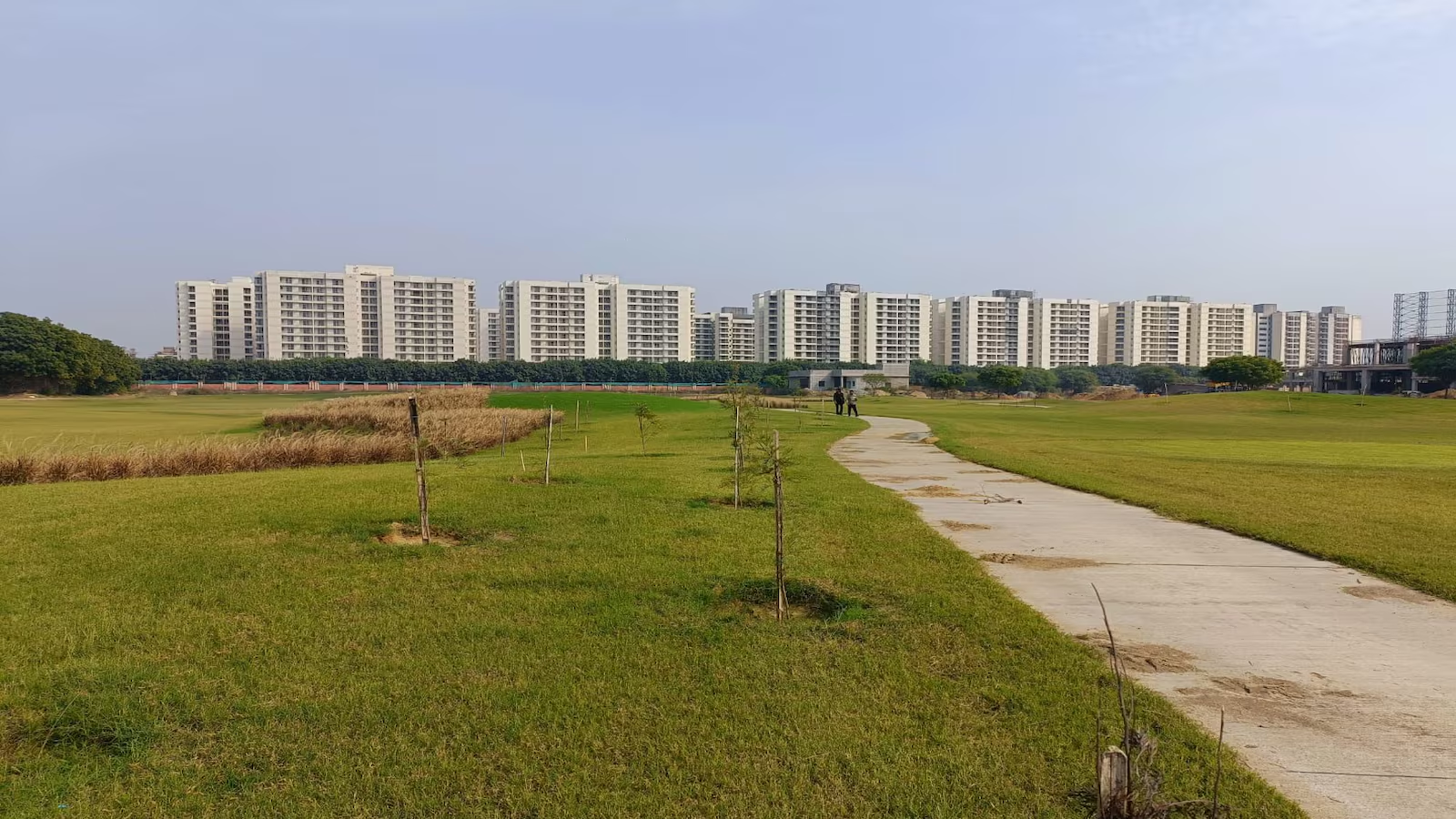Top Stories
2018 In Retrospect Outlook 2019 Realty Stakeholders Speak Out


If 2017 was the dawn of a new reality for the real estate sector, the year 2018 was all about getting adapted to it. The disruptive impact of the reforms introduced in the previous year having got subsided, the sector settled down to a more transparent and professional business environment. With RERA in place and regulatory authorities coming up in various states, it was a transformed real estate industry which one witnessed in 2018. The new accountability, transparency and compliance mechanism earned the trust of the buyers, brought them back to the market and the industry started seeing early signs of revival. With the majority of serious players having understood the new reality, new launches were given a break and all efforts were directed towards project-completion. A set of incentives introduced by the Government made affordable and mid-income housing more attractive and the segment attracted maximum attraction during 2018. Coupled with that was the rising demand for ready-to-move-in properties. Student housing and co-working as the new office format were the other segments which generated plenty of business during the year. A big pain-point during the year was the NBFC crisis which further squeezed the liquidity crunch for the sector.
The industry enters the New Year with lots of hopes and expectations. Besides hoping for the positive impact of reforms to continue in 2019, it wishes to see an enhanced ease-of-doing-business with lesser and faster clearances. With many of the smaller, non-serious players gradually fading out and only well-organised professional developers intent on doing rule-based business, the real estate industry has legitimate hopes of a major turnaround in 2019. General elections in the early part of the year and prevailing uncertainty may certainly lead to a temporary slowdown but otherwise all indicators point towards a Happy 2019 for the sector.
Realty & More got in touch with some prominent developers and other realty stakeholders to seek their impressions about the year gone by and their outlook for 2019. Here’s what they had to share with us:
Bijay Agarwal, Managing Director, Salarpuria Sattva Group


Bijay Agarwal Managing Director, Salarpuria Sattva Group
“The year 2018 saw consolidation in the real estate market as the stakeholders adapted to some irreversible paradigm shifts and initiatives aimed at streamlining the sector. Demonetisation, RERA, and implementation of GST had a combined effect on the real estate market. On the one hand, these measures ushered in transparency, accountability, and commitment in addition to eliminating unscrupulous players from the market, and on the other hand, they impacted the sales. From the developer’s side, most of the reputed builders had prepared for the impending impact because the majority of them already had better governance standards. However, from the consumer’s perspective, the liquidity crunch affected their home-buying pattern. Many retail investors for whom real estate was an asset class investment, also held back their decisions for future investments.
The year was challenging, but the majority of the leading developers are aligned with the changes and expect a better year for business in 2019. There were other positives this year, such as, credit linked subsidy, which made homes affordable to a specific segment of buyers, and scope for REITs. The primary focus for developers in 2018 was to dispose of existing inventory and launch few new projects, However in 2019, we are optimistic to launch more projects across metros. We are confident because the potential for growth in the real estate sector is still high considering a stable economy and availability of home loans.”
Rakesh Reddy, Director Aparna Constructions


Rakesh Reddy Director Aparna Constructions
“The residential real estate market has made a strong comeback in 2018, especially in metros and Tier-1 cities. Even corporate leasing has seen a fair share of rise as compared to the previous years. With the growing economy and the rising GDP, the momentum is only going to speed up. The recovery of the sector can definitely be attributed to policies like RERA that has revived the buyers’ confidence, especially for Hyderabad where the real estate sector is booming and infrastructural developments are playing a key catalyst in the growth.
The year 2018 witnessed a major revolution in terms of policy changes and affordable housing getting infrastructure status. If infrastructure status is granted to the entire sector in 2019, it will lead to financing being available to the developer at lower interest rates. In turn, this would make projects more affordable for the homebuyer. The real estate industry is also expecting Union Budget 2019 to rationalise GST rates from the current 12 per cent to 6 per cent or alternatively to subsume the stamp duty into the existing GST rate. Moving forward, developers and approval authorities are expected to maintain high levels of compliance and efficiency due to RERA. We believe project approvals to be processed more quickly with single-window clearance. An efficient, fair and transparent system would result in a revived demand for new projects in the market. Overall, the sector is ready for the New Year with new projects and surprises lined up in each segment.
Shishir Baijal
Chairman and Managing Director, Knight Frank India


Shishir Baijal Chairman and Managing Director, Knight Frank India
“The year 2018 will be recorded as a year marked by consistent volatility – on account of both international and domestic events. Globally, several factors such as rising oil prices, simmering geopolitical tensions between the US and China, prospects of an escalation in trade war, uncertainty in Middle East and Europe, have caused recurring stress to the markets. Domestically, the NBFC liquidity crunch impacted stakeholders’ sentiments. High crude oil price coupled with weakening Indian currency put pressure on RBI to raise interest rates. The real estate industry experienced protracted impact of structural reforms undertaken over the last 24 months, such as RERA, GST and demonetisation that collectively changed the way business is conducted in the country. The Indian real estate sector, while remaining largely optimistic, had its set of woes to deal with during the year with various asset classes reacting differently to the global and domestic stimuli.
Whilst we witnessed a healthy growth in office, industrial and retail sectors, there was also rising interest in niche-segments such as co-working, co-living and student housing. Considering sustained policy focus on construction of crucial national highways and industrial corridors, we saw continued strength in logistics and warehousing. The residential sector remained subdued. Although the supply side has done well given a healthy uptick in the number of launches, consumer demand has been lacking momentum especially in premium and luxury residential segments. However, we see an uptick in affordable housing sector – both from supply and demand side which leads us to believe that it would be a key driver for residential sector in coming times.
Going forward, we believe that the commercial sector would continue to perform well, although it might face the interim risk of supply shortage. Yet, the sector, along with industrial, retail and frontier segments like co-living, student housing, etc., should hold ground and continue to develop further. Additionally, the affordable housing should witness positive movement.”
Niranjan Hiranandani
President, Naredco


Niranjan Hiranandani
CMD, Hiranandani Group
“As the disruptive impact of policy reforms faded away in the early part of the year, 2018 witnessed signs of revival. The industry has now evolved extremely with an optimistic impact in terms of accountability, transparency and compliance mechanism balancing the scales with consumer becoming paramount. The residential segment faces challenges to cope up from the rippling effect of liquidity crisis hit by NBFC blow, locking up of 70% funds in escrow and postponement in logging sales to save tax burden on under- construction property. This situation has created urgency to source out alternative fund avenues for the on-going projects and relieve liquidity crunched sector on priority.
As we enter 2019, we look for some sort of magic to conjure up funds and ensure the sector remains work in progress. We are extremely bullish about the imperative growth of housing to gear up GDP growth at the projected rate of 7.8 per cent. Ambitious objective like ‘Housing for All by 2022’ and planning of slew of mega infrastructure projects across the country will co-script the sustainable growth story of Indian economy along with perennial job creation”.
Parveen Jain
CMD, Tulip Infratech & Vice-Chairman, Naredco


Parveen Jain
CMD, Tulip Infratech & Vice-Chairman, Naredco
“In the context of real estate market, 2018 can certainly be considered as better than the previous two years. The main reason for this was the normalisation of situation with regard to demonetisation, implementation of GST and RERA. The year saw the aftereffects of these factors getting subsided and the real estate industry coming to terms with them. In 2018, the major emphasis was on the sale of ready-to-move-in and affordable homes. All-out efforts were made for the supply of affordable housing to keep pace with the ever-increasing demand for the same.
The year also saw the opening of new transport corridors, expressways, flyovers, roads and bridges and an ever-expanding Metro network in Delhi-NCR. This led to the overall improvement of the infrastructure, which is going to boost further in the coming year. With remote areas becoming easily accessible, leading to the development of supporting infrastructure, the emphasis has been to develop more commercial and office spaces besides housing and the trend shall continue in 2019.
The expectations for the year 2019 are high and positive with factors like easy accessibility through highways, roads, Metro network, transport corridors, bridges, provision of affordable Housing, commercial and office spaces, development of Infrastructure gaining further momentum.”
Babulal Varma
MD, Omkar Realtors & Developers


Babulal Varma
MD, Omkar Realtors & Developers
“The Mumbai realty in 2018 reflected a bearish-to-steady market with the second half witnessing tighter liquidity situation in general. However, few projects offering great value within city’s micro markets attracted encouraging customer attention. Brand Omkar’s inventory in the boutique luxury and luxury categories outperformed the market average riding on its ticket sizing, design, amenities and location factors. I expect the demand for such value offerings will be positive during 2019 too. The industry looks forward to having a more positive liquidity situation during 2019 considering its high relevance to country’s economic growth”.
Mona Jalota
Founder & MD, Krypton Global Investments


Mona Jalota
Founder & MD, Krypton Global Investments
“The year 2018 was a watershed year for the domestic real estate industry which saw many impactful initiatives of 2017 taking a firm shape. Even though the demonetisation and RERA put brakes on the growth of the overall residential sector, incentive policies by the Government and effective implementation of RERA impacted the affordable housing sector positively.
With sluggish realty market in recent times, the various changes implemented by the Government and high overall pricing in major metros, which offer little or no growth potential, poor infrastructure and poorer rental returns, and investors realising that returns from the domestic sector would, perhaps, take as long as 15 years, international markets gained flavour with the HNI investors.
Many foreign real estate markets work and operate in a much more transparent manner. There are no delays or red tape due to bureaucratic processes or paperwork thereby increasingly grabbing the attention of Indian investors. While all these reasons are making people look beyond the Indian real estate market, some countries offer residency and citizenship benefits if anybody owns a property in that country. So, if someone plans to migrate at some point in the future to that country, investing in real estate can be a good way to attain an easy access to residency.
Unlike Indian real estate markets, where there is a higher capital appreciation year-on-year, foreign markets demonstrate better rental appreciation. So, hoping to make a purchase and expecting the prices to escalate overnight within a year or two is highly an unlikely scenario. Most overseas markets are mature and hence would enjoy a stable capital appreciation. Having said that, if one has the vision to be a long-term player, one can not only enjoy the benefits of a steady rental income but also look forward to a reasonable and sometimes excellent capital appreciation in the five-year horizon.”
Anil Saraf
CMD, ASF Group


Anil Saraf
CMD, ASF Group
“During last two to three years, the realty sector has witnessed an unprecedented sluggishness due to effects of demonetisation and macro policy initiatives such as GST & RERA. The overall credit squeeze has not helped the situation either. While, policy changes like GST and RERA were essential, and these would support the long-term growth vision of our economy, in the short rum these measures have led to slowdown in the sector. Even then, the organised players are gradually getting equipped to attend to the intricacies of compliances associated with GST and RERA. But still, challenges continue to haunt the SME and unorganised players who continue to struggle to find a foothold for aligning with the new ground realities.
In the first half of 2018, residential real estate recorded a 25 per cent annual increase in sales in metros. Concurrently, commercial realty has also been picking up. Leasing activities of corporate rose by 54 per cent y-o-y. As per recent reports, office absorption in 2020 is expected to exceed 2011’s historic high of 37 million sq. ft. While the new growth drivers would be affordable housing, logistics and warehousing, the expectations are that student housing will emerge as a Rs 2,400-crore market by 2020”.-”
Anindya Dutta
Co-founder, Stanza Living


Anindya Dutta Co-founder, Stanza Living
“The student housing sector is currently a $5-billion industry. The sector sees robust demand from nearly 11 million migrating students within the country. However, the space is largely unorganised, with lack of quality infrastructure and personalised services being significant gap areas. There has been growing interest and acceptance for technology-enabled world-class student housing ventures like Stanza Living, which are focused on professionally organising and reimagining student co-living in India. The student housing sector will continue to grow robustly, driven by migrant-student demand that is expected to echo the growth in higher education avenues. Additionally, a discerning student population that seeks a professionally managed student living experience, catering to their particular needs and aspirations, is leading to growth of brands that can deliver this value proposition. In line with this, we have set ourselves an aggressive target to grow to over 10,000 beds within the next one year”.
Anurag Mathur
CEO, Savills India


Anurag Mathur
CEO, Savills India
“The residential sector, which has the widest exposure, has been besieged by very poor sentiment for over three years now. However, it has gone through a process of significant restructuring and reform, the foremost being the advent of RERA, and as such the worst may be behind with a more modest and sustained recovery over the next several years. For the office sector, 2018 was one of the best years. Several key cities recorded highest levels of rent and lowest levels of vacancies, even though the office stock availability varies significantly. The Industrial and warehousing sector will continue to be the biggest beneficiary of the GST regulation due to simplified tax regime, faster movement of goods and warehouse consolidation. It was also one of the best years for real estate investments where nature and maturity of investors has gone up significantly. The investment in real estate has demonstrated a CAGR of 40 per cent over the last five years. A large component of this investment is still directed towards residential sector (36 pc) with offices (31 pc) and hotels (12 pc) being second and third respectively.
The year2019 promises to be a decisive year for India politically due to the general elections but unlikely to have any major impact on the economy or the real estate industry. From our point of view, demand continues to remain robust across all asset classes even though the velocity and volumes may be more nuanced”.
-



 News3 weeks ago
News3 weeks agoKW Delhi 6 Mall Onboards New Brands
-



 News4 weeks ago
News4 weeks agoManasum Senior Living Launches IKIGAI GOA, A Senior Living Community in North Goa, in collaboration with Prescon Homes
-



 News3 weeks ago
News3 weeks agoCommercial Realty Gets Tech Savvy: Fast Construction, Enhanced Convenience
-



 News2 weeks ago
News2 weeks agoGodrej Properties Sells Rs 3k cr+ Homes of Godrej Zenith, Gurugram, within 3 days
-



 News4 weeks ago
News4 weeks agoBridging India Divide: Top 5 Tier- 2 Cities to Focus On
-



 News4 weeks ago
News4 weeks agoMultipoint Connection – A Definite Boon
-



 News3 weeks ago
News3 weeks agoRBI’s Status Quo on Key Policy Rates to Help Maintain the Real Estate Growth Momentum, Say Industry Stalwarts
-



 News1 week ago
News1 week agoOlive Announces Dhruv Kalro as Co-Founder


























